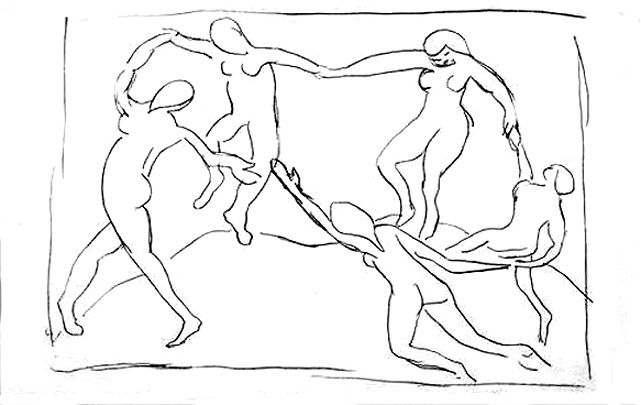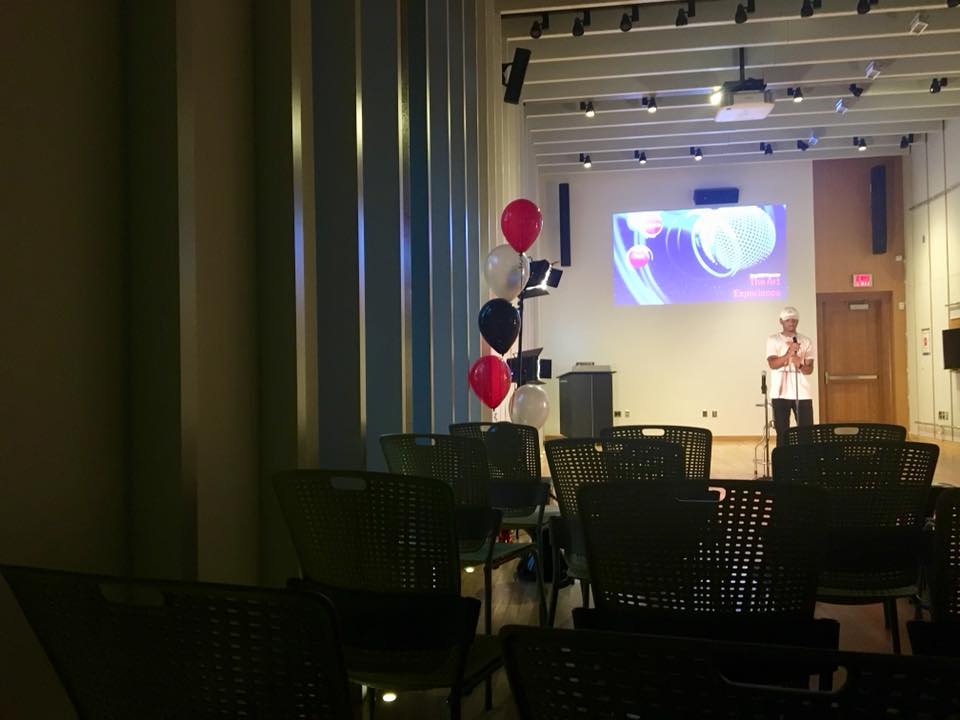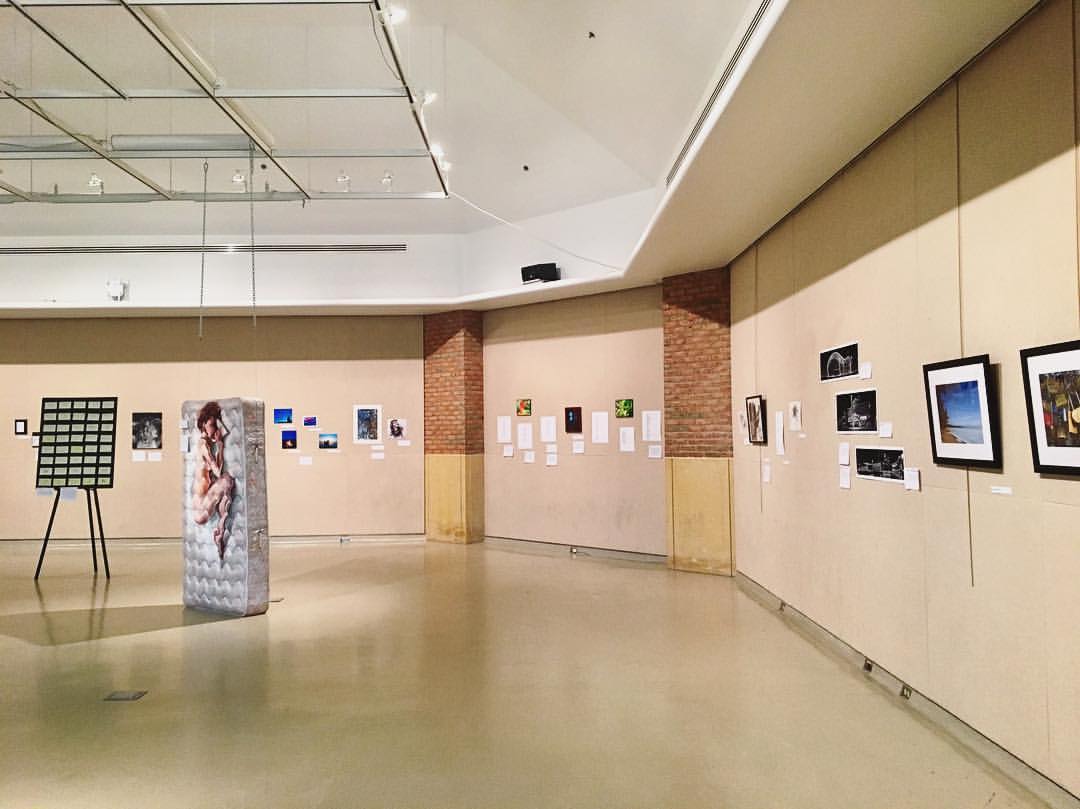Walking into the UMMA exhibit, you are greeted by a sky blue wall detailing a small biography of Matisse. On the other side is Kelly’s biography, with Kelly’s collection of sketches in that section.
I looked at Kelly’s side first, since it seemed to be the smaller collection. I noticed a lot of experimentation with differentiation of line thickness. While all the sketches were simple in nature, they had a subtle artistic quality to them. For example, in “Catalpa Leaf,” there were two lines. They started off thick at the top, and only crossed each other at the bottom of the leaf. The lines faded out there as well, adding a sense of fragility to the leaf that likely was meant to represent the leaf’s qualities in reality. This theme was present in most of Matisse’s sketches, so I see where the dialogue comes in between the two artists.

After viewing Kelly’s sketches, I went over to the Matisse side of the room. I noticed a lot of exploration of the fluidity of form, as a lot of the objects in Matisse’s sketches seemed to blend into one another while still retaining their own shape.
One of my favorite Matisse sketches was called “Dance movement, Christiane.” It detailed the legs and lower torso of a ballerina. The lines, like in most of Matisse’s sketches, were shaky. I thought maybe the unsteadiness of the lines was a representation of the dancer’s movement. The woman I was with argued that maybe Matisse was inebriated while drawing it. Both opinions are reasonable, I think.
A lot of Matisse’s other drawings demonstrated the progression of his creative mind. For instance, “Acrobat, study” depicted a woman in the bridge position, with her torso facing the sky. Matisse’s use of lines reminded me a little of the Kelly drawings – the only steady stroke represented the woman’s stomach. If you’ve ever done the bridge stretch, you’ll notice the stretch in your core. Matisse seemed to represent this in his ink strokes. The rest of her form was loose and not accurate in any means. Even from an expressionist viewpoint, it was not beautiful.
The sketch next to it, however, was interesting. Entitled “Four studies of acrobats,” the figures were more well-defined and biologically accurate. To me, this made them more aestethically appealing. It definitely showed a progression in Matisse’s line of thought regarding how he wanted to portray the acrobats.
Other aspects of the Matisse collection that I found interesting were the drawings that reminded me of Picasso’s technique. “Veiled woman” had many cubist qualities, such as the characteristics in her face and the way her arm melted into the veil around her head. Beside “Veiled woman” was “Themes and variations VI.” The subject’s veil is unfinished, but should cover her face. Her face, however, is obviously still visible and exposed to the viewer. The same goes for her breast. This suggests that Matisse saw her face and torso as the most captivating parts of her, and used expressionist technique to portray that.
The subject’s veil is unfinished, but should cover her face. Her face, however, is obviously still visible and exposed to the viewer. The same goes for her breast. This suggests that Matisse saw her face and torso as the most captivating parts of her, and used expressionist technique to portray that.
Lastly, Matisse used lines to represent light. In “Study, boat” the lines around the plant in the window are squiggly. I saw this as the movement of light as it’s dappled by the world outside. Of course, in a sketch, it’s impossible to make your subjects move. Matisse accomplished a sense of movement by using different stroke techniques.
In conclusion, I was impressed by the collection at the UMMA. It was fun to see “The Dance” in sketch form – it was actually really underwhelming compared to its meaning in expressionist history. The progression of Matisse in his drawings and the (albeit somewhat minimal) dialogue between him and Kelly added a lot to my interpretations of the exhibit.










